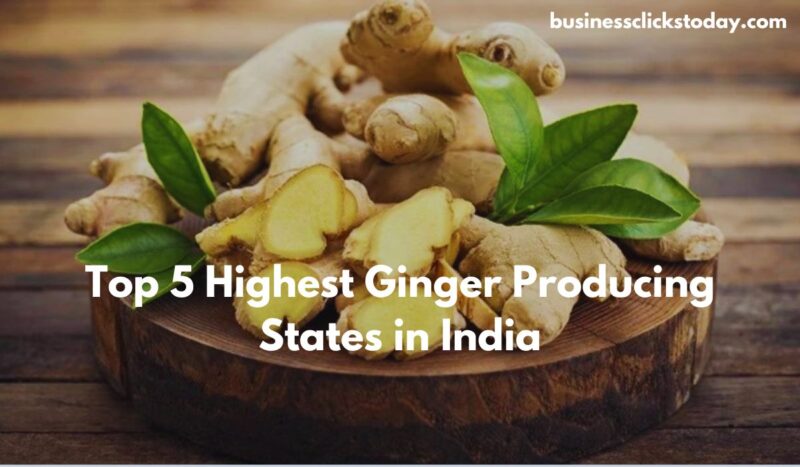If you live in India, you know the immense value of ginger, which is widely used as a spice across the country. From chai to curries, and even in medicinal applications, ginger plays a vital role in Indian cuisine and health practices. But have you ever wondered where this essential spice is grown? In India, certain states are renowned for their ginger production due to favorable climate conditions, making them the highest ginger-producing states in India. Today, we’ll explore the top 5 highest ginger producing states in India as of 2024.
Top 5 Highest Ginger Producing States In India 2024
Madhya Pradesh – 692,110 tonnes
Madhya Pradesh tops the list of ginger producers with an impressive 692,110 tonnes. The state’s ginger is in high demand both locally and internationally, available in both fresh and dried forms. Despite fluctuations in ginger prices, Madhya Pradesh has managed to increase its output, thanks to its rich and fertile soil. Although some regions have seen a decrease in production, the overall output remains substantial.
Karnataka – 306,340 tonnes
Karnataka is a significant player in the ginger market, producing 306,340 tonnes. The Malenadu region, stretching from Uttara Kannada to Shimoga districts, offers ideal conditions for ginger cultivation. Favorable weather and soil conditions, combined with intensive farming practices driven by market prices, have boosted production. However, this has led to environmental issues such as pollution and soil damage from chemical overuse.
Assam – 170,730 tonnes
Assam has made notable progress in ginger production, reaching 170,730 tonnes this year. The focus here is on organic ginger, which is grown without harmful chemicals, making it a healthier and more eco-friendly option. The Assam government supports this initiative through the Mission Organic Value Chain Development for the North Eastern Region, connecting farmers to larger markets, including international destinations like Dubai.
Maharashtra – 164,230 tonnes
Maharashtra’s ginger production has increased to 164,230 tonnes, a significant rise from previous years. Farmers were previously deterred by low ginger prices but are now motivated by higher prices, which have reached up to Rs 15,000 per quintal. This shift demonstrates the volatility of farming, where market demand and crop size significantly influence prices.
West Bengal – 135,070 tonnes
West Bengal has also expanded its ginger production to 135,070 tonnes. The state utilizes its diverse climate zones to cultivate ginger alongside other agricultural practices. The West Bengal government’s support, including providing seeds, fertilizers, and farmer training, helps stabilize and boost ginger production, reinforcing its status as one of the highest ginger-producing states in India.
FAQs
Q1. What countries produce the most ginger?
A1. India is the leading producer of ginger, followed by Nigeria, China, Indonesia, and Nepal.
Q2. Does India export ginger?
A2. Yes, India is a major exporter of ginger, in addition to being one of the top global producers.
Q3. Who introduced ginger to India?
A3. Ginger was likely introduced to India by early Southeast Asian sailors who interacted with the people of Sri Lanka and South India.
Q4. Which countries import ginger from India?
A4. Major importers of Indian ginger include Germany, the USA, and the United Arab Emirates, with other countries such as the UK, Saudi Arabia, Morocco, Egypt, Nepal, and Spain also being significant buyers.
Q5. What are the different types of ginger in India?
A5. India cultivates various types of ginger, named after their growing regions. Notable varieties include Maran, Kuruppampadi, Ernad, Wayanad, Himachal, and Nadia.
In conclusion, the top 5 highest ginger producing states in India play a crucial role in meeting both domestic and international demand for this versatile spice. From Madhya Pradesh’s leading production to West Bengal’s expanding output, these states demonstrate the importance of regional climates and farming practices in ginger cultivation.
















